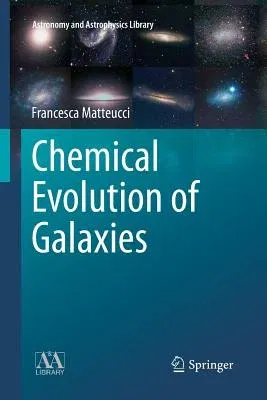Francesca Matteucci
(Author)Chemical Evolution of Galaxies (2012)Paperback - 2012, 23 February 2014

Qty
1
Turbo
Ships in 2 - 3 days
In Stock
Free Delivery
Cash on Delivery
15 Days
Free Returns
Secure Checkout

Part of Series
Astronomy and Astrophysics Library
Print Length
226 pages
Language
English
Publisher
Springer
Date Published
23 Feb 2014
ISBN-10
3642430058
ISBN-13
9783642430053
Description
Product Details
Author:
Book Edition:
2012
Book Format:
Paperback
Country of Origin:
NL
Date Published:
23 February 2014
Dimensions:
22.86 x
15.49 x
1.52 cm
ISBN-10:
3642430058
ISBN-13:
9783642430053
Language:
English
Location:
Berlin, Heidelberg
Pages:
226
Publisher:
Weight:
340.19 gm